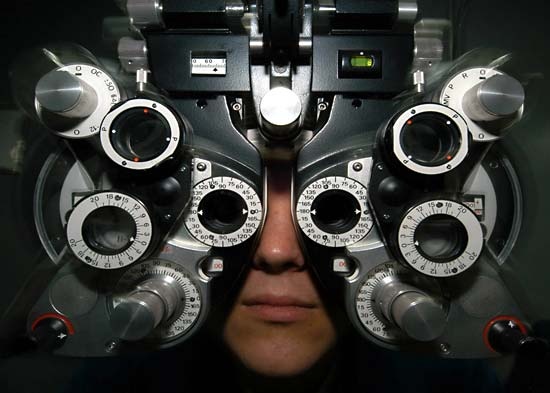ophthalmology
 medical specialty dealing with the diagnosis and treatment of diseases and disorders of the eye. The first ophthalmologists were oculists. These paramedical specialists practiced on an itinerant basis during the Middle Ages. Georg Bartisch, a German physician who wrote on eye diseases in the 16th century, is sometimes credited with founding the medical practice of ophthalmology. Many important eye operations were first developed by oculists, as, for example, the surgical correction of strabismus, first performed in 1738. The first descriptions of visual defects included those of glaucoma (1750), night blindness (1767), colour blindness (1794), and astigmatism (1801).
medical specialty dealing with the diagnosis and treatment of diseases and disorders of the eye. The first ophthalmologists were oculists. These paramedical specialists practiced on an itinerant basis during the Middle Ages. Georg Bartisch, a German physician who wrote on eye diseases in the 16th century, is sometimes credited with founding the medical practice of ophthalmology. Many important eye operations were first developed by oculists, as, for example, the surgical correction of strabismus, first performed in 1738. The first descriptions of visual defects included those of glaucoma (1750), night blindness (1767), colour blindness (1794), and astigmatism (1801).The first formal course in ophthalmology was taught at the medical school of the University of Göttingen in 1803, and the first medical eye clinic with an emphasis on teaching, the London Eye Infirmary, was opened in 1805, initiating the modern specialty. Advances in optics by the Dutch physician Frans Cornelis Donders in 1864 established the modern system of prescribing and fitting eyeglasses to a particular vision problem. The invention of the ophthalmoscope for looking at the interior of the eye created the possibility of relating eye defects to internal medical conditions.
In the 20th century, advances in the field have chiefly involved the prevention of eye disease through regular eye examinations and the early treatment of congenital eye defects. Another major development was the eye bank, first established in 1944 in New York, which made corneal tissues for transplantation more generally available.
The function of the human eye is to receive visual images. Whatever adversely affects vision is the concern of the ophthalmologist, whether it be caused by faulty development of the eye, disease, injury, degeneration, senescence, or refraction. He makes tests of visual function and examines the interior of the eye as part of a general physical examination for symptoms of systemic or neurologic diseases. He prescribes medical treatment for eye disease and glasses for refraction and performs surgical operations where indicated. See also optometry.
- Velar and palatal stops in the Indo-European languages
- velarization
- Velasco Alvarado, Juan
- Velasco Ibarra, José María
- veld
- Velde, Adriaen van de
- Velde, Esaias van de
- Velde, Henry van de
- Velenje
- veliger
- Veliki Preslav
- Velikiye Luki
- Velikonda Range
- Veliko Tŭrnovo
- Velikovsky, Immanuel
- Veliky Knyaz Constantine
- Veliky Ustyug
- Velimir Vladimirovich Khlebnikov
- Velleius Paterculus
- Vellore
- Vellore Mutiny
- velocipede
- Velociraptor
- velocity
- Velsen